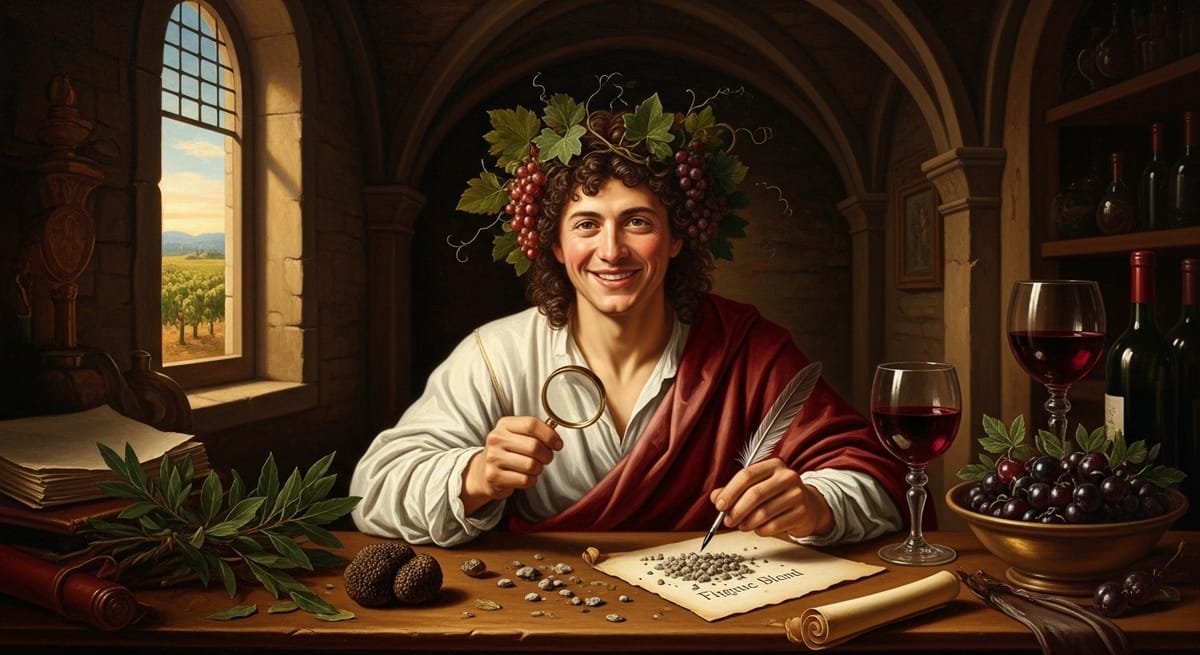The Aristocrat Who Took The Fight To The Left Bank
Château Figeac 2016 is a monumental Saint-Émilion blend renowned for its Left Bank-style elegance and longevity. Its unique gravel terroir and high Cabernet content provide a poised structure and complex aromatics.

Pull up a chair, forget what the vintage charts tell you, and pour one. Château Figeac 2016 isn't just a bottle of Saint-Émilion; it's a beautifully subversive statement carved in clay and gravel. This wine is the answer to the question, "What if the Right Bank decided it wanted to box with the elegance of Pauillac, but kept the soul of the merlot-drinker?"
We're talking about Bordeaux royalty here, but the kind of royalty who actually works the fields and doesn't just collect checks. If you've been conditioned to think great Bordeaux is all about monolithic power, this bottle is here to liberate you. This is a chance to acquire a piece of history that decided to write a whole new, glorious chapter for the appellation. Ignore it at your peril.
The Scent Of A Conspiracy
In the glass, it sits with a serious, opaque ruby core that holds light captive, barely yielding to a vibrant crimson rim. It looks like liquid ambition.
The aromatics don't just unfold; they unspool like a velvet ribbon unrolling across a cool stone floor. We're talking an explosive, layered perfume of crushed cassis, ripe black plum, and black cherry, but with a savory backbone that keeps it from veering into jam. Then comes the Figeac signature: a wild, soaring note of graphite, tobacco leaf, and fresh bay laurel. It smells like an old leather-bound journal left open in a forgotten forest clearing—earthy, intellectual, and utterly captivating. A dusting of mint and cedar from the new oak is present, but it's structural, a well-tailored suit, not a costume. It's the scent of a conspiracy you desperately want to join.
The Silent Knife On The Palate
On entry, the first thing you notice is the poise. This wine moves with a tensile, athletic grace. Bone-dry, of course, with medium-plus body that doesn't feel heavy, thanks to an acidity that is both electric and perfectly integrated—it keeps the fruit singing, not slumping.
The tannins are the real key to the kingdom. They’re high, yes, but they’ve been tumbled in silk. They dust the mouth like cocoa powder, fine-grained and resolute, providing structure for decades without a hint of harshness. Flavor-wise, the journey is long: black fruit morphs into salty dark chocolate, licorice root, and a persistent, cool minerality—the cold stone of the terroir fighting the warmth of the vintage. The long, contemplative finish is where the magic happens, echoing with cedar, black tea, and that haunting, savory spice that ties it all back to the Saint-Émilion soil. This is power dressed in a tuxedo.
Why The Gravel Matters
To understand Figeac is to ignore the standard Right Bank narrative. Most of Saint-Émilion is clay and limestone, perfectly suited to Merlot's plush nature. Figeac, however, sits on an outlier plateau of deep, free-draining Günz gravel, a geological anomaly that makes it kin to the great châteaux of the Médoc (the Left Bank).
This gravel is why Cabernet Franc (about a third of the blend) and Cabernet Sauvignon (another third) are star players here, sharing top billing with Merlot. It’s a deliberate defiance of the local standard, resulting in a wine built on Cabernet’s tensile strength and aromatic finesse rather than Merlot's soft, immediate flesh.
The 2016 vintage was a near-perfect year across Bordeaux, defined by a wet spring followed by a hot, dry summer, and crucially, cool, sunny conditions in September that allowed for slow, even ripening. This gave the Cabernets time to achieve optimal phenolic maturity without overripeness, securing Figeac's structure for the long haul and creating what many consider a monumental, benchmark wine for the estate.
The Only Investment That Tastes This Good
If you're a collector who loves the longevity and structure of Left Bank giants but appreciates the Right Bank's immediate generosity, Figeac 2016 is the savvy, blue-chip play. It's the wine that every critic—from Suckling to Galloni—threw a high-90s score at, recognizing it as one of the vintage's defining achievements.
Scarcity is built into the name; it’s a finite, historic plot. This wine has the acid and tannin backbone to sail effortlessly through 2050 and beyond. If you drink it now, you’re tasting a magnificent baby. If you cellar it, you’re investing in the future—in a tertiary complexity of leather, dried rose, and cigar box that will one day reward your patience with divine grace. Don't be the amateur who sells too early.
Final Note From The Grape-Stained
This is not a wine to be politely tasted; it's a wine to be studied, shared, and revered. Château Figeac 2016 has that rare, gravitational pull—it demands you put down your phone, turn off the television, and pay attention to the moment.
It’s the kind of bottle you uncork to remind yourself that patience is a virtue, and that elegance is infinitely more terrifying than brute force. Claim your bottles while you can. Regret is a flavor that no amount of time, decanting, or money can ever correct.





